#Global Warming pdf
Text
Essay On Global Warming In English for Students and Children
Introduction
Essay on Global Warming in English for Students and Children: Global warming is a term used to describe the gradual increase in the average temperature of the Earth’s surface over the time. The phenomenon is primarily caused by human activities, including the burning of fossil fuels, deforestation, and industrial processes, among others. The consequences of global warming are…

View On WordPress
#10 causes of global warming#10 effects of global warming in points#essay on global warming for class 8#essay on global warming in 100 words#essay on global warming in 150 words#essay on global warming in 200 words#essay on global warming in 250 words#essay on global warming in 300 words#essay on global warming in 500 words#global warming#global warming articles for students#global warming definition causes and effects#global warming essay pdf#global warming pdf#global warming problems and solutions#global warming wikipedia#importance of global warming
0 notes
Text
Report of Methane Global
This report is the annual report released by the IEA (International Energy Agency). As per the latest report, fossil fuel companies released 120 million metric tones of methane into the atmosphere last year. This is just a slight decline from the unprecedented record created in 2019.
What is the report saying?
The report found that no effort has been taken by fossil fuel companies to bring down…

View On WordPress
#a current affairs#art and culture current affairs#Current Affairs#current affairs ebooks#current affairs for upsc#current affairs for upsc ias#current affairs for upsc ias online preparation#Current Affairs In English#current affairs magazine#current affairs news#current affairs pdf#current affairs questions#current affairs quiz#Current Affairs Today#current affairs topics#daily current affairs#gk current affairs quiz#GK Today#gk today current affairs#Global Warming#International Current Affairs#latest current affairs#Methane Global#monthly current affairs pdf#news and current affairs#pdf of current affairs#state current affairs#study iq current affairs#upsc state psc current affairs mock test#vision current affairs
0 notes
Text
There is no climate emergency
A global network of over 1800 scientists and professionals has prepared this urgent message. Climate science should be less political, while climate policies should be more scientific. Scientists should openly address uncertainties and exaggerations in their predictions of global warming, while politicians should dispassionately count the real costs as well as the imagined benefits of their policy measures.
Natural as well as anthropogenic factors cause warming
The geological archive reveals that Earth’s climate has varied as long as the planet has existed, with natural cold and warm phases. The Little Ice Age ended as recently as 1850. Therefore, it is no surprise that we now are experiencing a period of warming.
Warming is far slower than predicted
The world has warmed significantly less than predicted by IPCC on the basis of modeled anthropogenic forcing. The gap between the real world and the modeled world tells us that we are far from understanding climate change.
Climate policy relies on inadequate models
Climate models have many shortcomings and are not remotely plausible as global policy tools. They blow up the effect of greenhouse gases such as CO2. In addition, they ignore the fact that enriching the atmosphere with CO2 is beneficial.
CO2 is plant food, the basis of all life on Earth
CO2 is not a pollutant. It is essential to all life on Earth. Photosynthesis is a blessing. More CO2 is beneficial for nature, greening the Earth: additional CO2 in the air has promoted growth in global plant biomass. It is also good for agriculture, increasing the yields of crops worldwide.
Global warming has not increased natural disasters
There is no statistical evidence that global warming is intensifying hurricanes, floods, droughts and suchlike natural disasters, or making them more frequent. However, there is ample evidence that CO2-mitigation measures are as damaging as they are costly.
Climate policy must respect scientific and economic realities
There is no climate emergency. Therefore, there is no cause for panic and alarm. We strongly oppose the harmful and unrealistic net-zero CO2 policy proposed for 2050. If better approaches emerge, and they certainly will, we have ample time to reflect and re-adapt. The aim of global policy should be ‘prosperity for all’ by providing reliable and affordable energy at all times. In a prosperous society men and women are well educated, birthrates are low and people care about their environment.
25 notes
·
View notes
Text
Absolute clown behavior of the government to force disabled students to renew their accommodations every year. Like do you think my dyspraxia is suddenly gonna disappear and I'll be able to write with a pen for 8 hours straight because the year changed???
Especially worse coming from the "try to be mindful about sending emails with large attachments 🥺" guys. Were the 3 emails with 2 PDFs each I sent to ask for the exact same accommodations I've been using for 6 years really necessary, mister "In order to combat global warming I'm going to tax the people who need to drive to work"? Were they?
10 notes
·
View notes
Text
it really needs to sink in for the majority of the population that we are already locked in for catastrophic effects of climate change. im gonna go look for the actual paper but like. we hit 1.5 degrees of warming this year (1). The fucking paris agreements are talking about like “ohhh if we try really really hard we can stop it at 2 degrees by the end of the century :)” when we’re on track for 4.8. an article on the intercept mentioned offhandedly that 4 degrees of warming could mean losing up to 90% of the worlds population (2). we dont even have the words for how fucked we are.
and this is what drives me fucking nuts. like, the catastrophe is happening and we need to adjust how we think about the world. and by that i mean that when we talk about events in the global south we need to acknowledge and prepare for the fact that that land is going to be uninhabitable and those people are going to have to move. and the grief of that is unimaginable. but it is true and it is happening. and what we NEED, desperately need, to do is to prepare: borders need to go, immigration requirements need to go, all of our efforts have to be directed into sustainable infrastructure, relocation, and cultural preservation. that’s the conversation that needs to be happening and isnt.
1: “A Miracle Will Occur” Is Not Sensible Climate Policy, https://www.columbia.edu/~jeh1/mailings/2023/Miracle.2023.12.07.pdf
2: When Idiot Savants Do Climate Economics, https://theintercept.com/2023/10/29/william-nordhaus-climate-economics/
7 notes
·
View notes
Note
I get sad about how actually being a millennial is hell because of global warming and the economy but then I remember I know how to open a pdf file with no help because I was raised on the computer!
HDHSHDJDK pros and cons x
2 notes
·
View notes
Text
Quartz: These 20 countries are considered "planet wreckers"
While countries around the world push for renewable energy in a new electric age, some of the same countries are also planning the largest oil and gas projects. Just 20 countries are responsible for nearly 90% of new oil and gas extraction projects between 2023 and 2050, according a new report (pdf) by Oil Change International.
The analysis estimates that the projects by those countries, which the report calls “planet wreckers,” would culminate in 172.6 gigatons of CO2 pollution by 2050. That is equivalent to the lifetime of about 1,082 coal plants.
Researchers warn that if oil and gas is allowed to expand at this scale, holding global temperature rise to 1.5°C would be impossible.
The top oil and gas expanders are some of the same countries leading renewable energy efforts. The United States, dubbed “Planet Wrecker In Chief” has more oil and gas projects planned through 2050 than any other country, amounting to an estimated 72.5 gigatons of CO2.
The Global North’s “climate hypocrites”
Along with the US, four other Global North countries with the greatest economic means to rapidly phase out production—referred to in the report as “climate hypocrites”—are responsible for 51% of oil and gas expansion by 2050. Canada trails the US and is followed by Australia, Norway, and the UK. The countries’ emissions from new projects are estimated to be 18.6, 4, 3, and 1.8 gigatons of CO2 respectively.
“It’s simple: when you are in a hole, the first step is to stop digging. The climate crisis is global in nature—but is atrociously unjust,” said co-author Romain Ioualalen in a press release. “A handful of the world’s richest nations’ are risking our future by willingly ignoring the calls to rapidly phase out fossil fuels.”
Without any new oil and gas fields or licenses, researchers estimate global oil and gas production would decline by 2% per year to 2030 and by 5% per year from 2030 to 2050. But stopping new oil and gas would not be enough, according to the authors. Limiting global warming to 1.5°C would require governments to go further by closing down already producing fields.
Cumulative pollution from new oil and gas extraction, 2023-2050
Top 20 countries with the most planned oil and gas expansion
Gas
Oil
US
34.2 gigatons of CO2
38.3
Canada
8.9
9.8
Russia
5
12.3
Iran
3.2
6.6
China
3.2
5.7
Brazil
4.9
0.8
UAE
3.8
1.6
Australia
0.6
3.4
Argentina
2.2
1.4
Iraq
2.4
1
Turkmenistan
0.2
3.2
Norway
1.8
1.1
Saudi Arabia
1.5
1.4
Mexico
1.8
0.6
Guyana
2.2
0.1
Qatar
0.7
1.5
Nigeria
1.3
0.8
UK
1.2
0.6
India
0.7
1
Kazakhstan
1.3
0.2
2 notes
·
View notes
Note
okay i'm back
im so sad abt lavender ending but i'm also so excited for yearling!! in my head lavender will never end we're just tiktok reality shifting to a new universe with a new mc and a new joel while doc and lavender!joel focus on retirement and helping the world reinstate global warming via co2 emissions (i'll give them a pass they deserve it)
i don't think theres anything i can say that hasnt already been said about lavender but it truly was amazing and i loved experiencing it!! no story series (fanfic or otherwise) was as enjoyable to me as this was!!!!!!! it ending just means i need to start getting the book binding materials ordered 🥹
also idk if you've answered this already (im sure it's on your blog somewhere) but eta on yearling ch. 1? i'm sure you wanna focus on beskar doll for a while and that's understandable and valid but no harm in asking!!
Hi Bestie!!!
I totally get you lol! Yearling!Joel will be a bit different but I'm so excited to explore his journey. Lavender!Joel is busy raising his daughters and loving his wife and being the fun uncle for his nieces and nephews because he does things like teaches them to shoot and carves them stuff and feeds them canned peaches when they ask nicely enough and talks Auntie Doc into making cookies for everyone because she can't say no to him.
Yearling Ch. 1 is up, bestie! Here's a link to it on Tumblr and one on AO3! Chapter two is imminent, but I'm focusing on wrapping Beskar Doll (Aiming for a Sunday wrap on that!). Latest for chapter two will be Tuesday :)
I'm excited to hear what you think about Yearling! I hope you love it!
Thank you so much for being here, I'm so excited to see your work on binding (I was thinking of doing a final quick copy editing pass at this now that I'm further removed from the early chapters, just to fix errors not to change content? Let me know if you want an updated PDF or whatever else I can do to help in that process!) It's been so fun to read your thoughts as you've connected with this story. Thank you for helping to make it what it is!
Love you!
3 notes
·
View notes
Link

9 notes
·
View notes
Text
Cool Roof Coatings Market Projected to Reach USD 780.9 million with a CAGR of 6.8%
The forecasted advancement of the global cool roof coating market with a moderate CAGR of 6.8% shall take the market to a US$ 780.9 million valuation. The last recorded market valuation for the subject market was about US$ 402.8 million in 2021. This market growth is influenced by various governing forces that help the market to grow.
To develop green buildings, governments of different countries have implemented various laws. These laws aim to reduce energy costs by 40%. Such efforts fuel the growth of the subject market. The main reason behind this is the scope for cool roofing in the modern world. Governments have been encouraging cool roofs, which propels the market advancement.
Global warming has been increasing worldwide. Due to this, energy-saving buildings have come into demand. It is one of the lucrative market segments that creates substantial opportunities for the subject market to grow by reducing energy consumption. This makes another market driver for the market under consideration.
Download sample PDF copy of report: https://www.transparencymarketresearch.com/sample/sample.php?flag=S&rep_id=47445
The construction industry has been growing significantly in the last few years. This growth agitates other sectors that are related to the construction industry. This collaborative growth of industries proves to be a fueling factor for the market under consideration.
Market Segmentation
By Service Type: Installation, Maintenance, Repair
By Sourcing Type: Water-based, Solvent-based, Silicone-based, Others
By Application: Flat Roofs, Sloped Roofs
By Industry Vertical: Residential, Commercial (Office Buildings, Retail, Hospitality), Industrial, Institutional (Schools, Hospitals)
By Region: North America, Europe, Asia Pacific, Latin America, Middle East & Africa
Regional Analysis
North America: Early adoption of cool roof technologies driven by energy efficiency mandates and green building initiatives.
Europe: Growing emphasis on sustainable construction practices and energy performance standards promoting cool roof coatings.
Asia Pacific: Rapid urbanization, rising temperatures, and government incentives accelerating market growth.
Latin America: Increasing awareness about energy conservation and climate change driving demand for cool roof solutions.
Middle East & Africa: Focus on sustainable infrastructure development in urban areas fueling market demand.
Market Drivers and Challenges
Drivers:
Energy Efficiency Regulations and Green Building Certifications.
Rising Demand for Sustainable Building Solutions.
Urban Heat Island Mitigation Strategies.
Cost Savings on Cooling Energy Expenses.
Challenges:
Initial Cost of Cool Roof Installation and Coating Application.
Compatibility with Different Roofing Materials and Architectural Styles.
Maintenance and Longevity Considerations.
Market Education and Awareness among Building Owners and Contractors.
Market Trends
Advanced Formulations: Development of high-performance and durable cool roof coatings with enhanced reflectivity and weather resistance.
Digitalization in Roofing: Integration of smart sensors and IoT technology for real-time monitoring of roof performance and energy savings.
Green Roofing Systems: Combination of cool roof coatings with green roof installations for synergistic environmental benefits.
Collaborative Partnerships: Collaboration between coating manufacturers, roofing contractors, and energy consultants to offer comprehensive cool roof solutions.
Future Outlook
The Cool Roof Coatings market is expected to witness continued growth driven by sustainability goals, regulatory support, and technological advancements in coating formulations. Innovations in cool roof materials, application techniques, and digital solutions will shape the market's trajectory towards energy-efficient and climate-resilient buildings.
Key Market Study Points
Market Dynamics: Regulatory landscape, market adoption drivers, and barriers influencing cool roof coatings demand.
Technological Innovations: Advancements in coating formulations, application methods, and smart roofing systems.
Environmental Impact Analysis: Energy savings, greenhouse gas reduction, and urban heat island mitigation benefits.
Market Segmentation Analysis: Key segments driving market growth and opportunities for customization.
Competitive Landscape: Major players, market strategies, partnerships, and new product developments.
Competitive Landscape and Recent Developments
Leading companies in the Cool Roof Coatings market include The Dow Chemical Company, Sherwin-Williams Company, PPG Industries, Inc., BASF SE, and Nippon Paint Holdings Co., among others. Recent developments such as product launches focusing on advanced cool roof technologies, strategic partnerships with building contractors, and sustainability certifications highlight the competitive dynamics and market responsiveness to evolving customer needs.
Buy this Premium Research Report: https://www.transparencymarketresearch.com/checkout.php?rep_id=47445<ype=S
About Transparency Market Research
Transparency Market Research, a global market research company registered at Wilmington, Delaware, United States, provides custom research and consulting services. Our exclusive blend of quantitative forecasting and trends analysis provides forward-looking insights for thousands of decision-makers. Our experienced team of Analysts, Researchers, and Consultants use proprietary data sources and various tools & techniques to gather and analyse information.
Our data repository is continuously updated and revised by a team of research experts so that it always reflects the latest trends and information. With a broad research and analysis capability, Transparency Market Research employs rigorous primary and secondary research techniques in developing distinctive data sets and research material for business reports.
Contact:
Transparency Market Research Inc.
CORPORATE HEADQUARTER DOWNTOWN,
1000 N. West Street,
Suite 1200, Wilmington, Delaware 19801 USA
Tel: +1-518-618-1030
USA – Canada Toll-Free: 866-552-3453
Website: https://www.transparencymarketresearch.com
0 notes
Photo

13 Misconceptions About Global Warming Common misconceptions about climate change. Check out Audible: http://bit.ly/AudibleVe References below: For CO2, sea levels, Arctic sea ice, Antarctic and Greenland land ice: http://climate.nasa.gov Satellite data shows that ground-based stations underestimate recent warming: Cowtan and Way, 2014 http://onlinelibrary.wiley.com/doi/10.1002/qj.2297/full For papers published on climate change during the 1970's, see Peterson, 2008 http://ams.confex.com/ams/pdfpapers/131047.pdf For solar and temperature data see NASA GISS, PMOD: http://www.acrim.com/tsi%20monitoring.htm Krivova et al. 2007: http://www2.mps.mpg.de/projects/sun-climate/data.html CO2 ratio of Carbon-13:Carbon-12 decreasing. IPCC AR4: http://www.ipcc.ch/publications_and_data/ar4/wg1/en/ch2s2-3.html CO2 emitted by volcanoes vs by humans: Gerlach, 2011 www.agu.org/pubs/pdf/2011eo240001.pdf Gerlach Mauna Loa CO2 data: http://www.esrl.noaa.gov/gmd/ccgg/trends/ Rising atmospheric water vapour: Santer, 2007 http://www.pnas.org/cgi/reprint/0702872104v1.pdf A doubling of CO2 will likely lead to a 3C increase in global temperatures according to many independent pieces of evidence: Knutti & Hegerl, 2008 http://www.iac.ethz.ch/people/knuttir/papers/knutti08natgeo.pdf Great resource on Milankovitch cycles: http://www.sciencecourseware.org/eec/GlobalWarming/Tutorials/Milankovitch/ CO2 lags temperature rise in the southern hemisphere but leads the global average temperature rise, Shakun et al. 2012 http://www.nature.com/nature/journal/v484/n7392/abs/nature10915.html Music by Kevin McLeod, http://incompetech.com Songs: Hidden Agenda, Sneaky Snitch, Harlequin
0 notes
Text
South America Coffee Market: Global Industry Analysis and Forecast 2023 – 2030

South America Coffee Market Size Was Valued at USD 17,124.87 Million in 2022, and is Projected to Reach USD 23,726.58 Million by 2030, Growing at a CAGR of 4.16 % From 2023-2030.
Espresso beans are roasted to make coffee, a type of beverage. It tastes tart and acidic and has a somewhat black appearance. Because it contains caffeine, coffee has a very clean effect on its drinkers. In the global market for warm drinks, it has the biggest sales volume.
Due to its status as a major producer and exporter of premium coffee beans, South America has a substantial market share in the coffee industry. Much of the world's coffee is produced in nations like Brazil, Colombia, Peru, and others in the region. Because of its wide variety of tastes and cultivars, the South American coffee market is a major supplier of both specialty and commodity-grade coffee beans.
stands out as the world's greatest producer of coffee, both in South America and globally. It is renowned for its expansive plantations and variety of coffee-growing locations. The nation's output has a significant impact on coffee prices worldwide. Conversely, Colombia is well-known for its premium Arabica beans, which are prized for their well-balanced acidity and subtle flavor. Notable production levels of Arabica and specialty coffee are also produced in other nations, such as Ecuador and Peru.
Brazilian production of coffee, especially Arabica and Robusta beans, has a significant impact on market availability and pricing. Colombia, which prioritizes quality over quantity and is well-known for its premium Arabica beans, is also a major player in the international market. The specialty coffee market in Peru is expanding and is becoming more and more well-known for its distinctive and flavorful beans that are grown in lower amounts while maintaining an emphasis on sustainability and quality.
Get Full PDF Sample Copy of Report: (Including Full TOC, List of Tables & Figures, Chart) @
Leading players involved in the South America Coffee Market include:
Atlantica Coffee, Juan Valdez Café, Olla Negra, Cafe Britt, Don Francisco's Coffee, Pachamama Coffee, Volcanica Coffee Company, Cafe La Virginia, Fazenda Cambara, Solides Café, Iguaçu Coffee, Cafe Sello Rojo, Cabrales S.A., Pilão Coffee, Cacique de Cafe Solúvel, Cafex Colombiana, Procafecol
The latest research on the South America Coffee market provides a comprehensive overview of the market for the years 2023 to 2030. It gives a comprehensive picture of the global South America Coffee industry, considering all significant industry trends, market dynamics, competitive landscape, and market analysis tools such as Porter's five forces analysis, Industry Value chain analysis, and PESTEL analysis of the South America Coffee market. Moreover, the report includes significant chapters such as Patent Analysis, Regulatory Framework, Technology Roadmap, BCG Matrix, Heat Map Analysis, Price Trend Analysis, and Investment Analysis which help to understand the market direction and movement in the current and upcoming years. The report is designed to help readers find information and make decisions that will help them grow their businesses. The study is written with a specific goal in mind: to give business insights and consultancy to help customers make smart business decisions and achieve long-term success in their particular market areas.
If You Have Any Query South America Coffee Market Report, Visit:
Segmentation of South America Coffee Market:
By Product Type
Whole Bean Coffee
Ground Coffee
Instant Coffee
Coffee Pods
Capsules
By Variety
Arabica
Robusta
Canephora
By Distribution Channel
On Trade
Off Trade
By Region
South America (Brazil, Argentina, Rest of SA)
Importance of the Report:
• Qualitative and quantitative analysis of current trends, dynamics and estimates;
• Provides additional highlights and key points on various South America Coffee market segments and their impact in the coming years.
• The sample report includes the latest drivers and trends in the South America Coffee market.
• The report analyses the market competitive environment and provides information about several market vendors.
• The report provides forecasts of future trends and changes in consumer behaviour.
• Comprehensive fragmentation by product type, end use and geography.
• The study identifies many growth opportunities in the global South America Coffee market.
• The market study also highlights the expected revenue growth of the South America Coffee market.
Our study encompasses major growth determinants and drivers, along with extensive segmentation areas. Through in-depth analysis of supply and sales channels, including upstream and downstream fundamentals, we present a complete market ecosystem.
If you require any specific information that is not covered currently within the scope of the report, we will provide the same as a part of the customization.
Acquire This Reports: -
About Us:
We are technocratic market research and consulting company that provides comprehensive and data-driven market insights. We hold the expertise in demand analysis and estimation of multidomain industries with encyclopedic competitive and landscape analysis. Also, our in-depth macro-economic analysis gives a bird's eye view of a market to our esteemed client. Our team at Pristine Intelligence focuses on result-oriented methodologies which are based on historic and present data to produce authentic foretelling about the industry. Pristine Intelligence's extensive studies help our clients to make righteous decisions that make a positive impact on their business. Our customer-oriented business model firmly follows satisfactory service through which our brand name is recognized in the market.
Contact Us:
Office No 101, Saudamini Commercial Complex,
Right Bhusari Colony,
Kothrud, Pune,
Maharashtra, India - 411038 (+1) 773 382 1049 +91 - 81800 - 96367
Email: [email protected]
#South America Coffee#South America Coffee Market#South America Coffee Market Size#South America Coffee Market Share#South America Coffee Market Growth#South America Coffee Market Trend#South America Coffee Market segment#South America Coffee Market Opportunity#South America Coffee Market Analysis 2023#US South America Coffee Market#South America Coffee Market Forecast#South America Coffee Industry#South America Coffee Industry Size#china South America Coffee Market#UK South America Coffee Market
0 notes
Text
Cooling Solutions for Business: Commercial Air Conditioning System Trends 2022-2031
A commercial air conditioning system is a group of devices and parts used in commercial and industrial buildings like offices, retail stores, hospitals, factories, and data centers to circulate and dry the air. Typically, commercial air conditioning systems have one or more sizable units mounted on the building's roof or in the building's exterior. The cooling air from the units is sent throughout the building via ducts that are attached to the units. The system might also come with a control mechanism that enables building occupants to set the temperature and other settings to the ideal level. The commercial air conditioning system market size was valued at $38.3 billion in 2021 and is estimated to reach $57.9 billion by 2031, growing at a CAGR of 4.5% from 2022 to 2031.
Request for Sample PDF: https://www.alliedmarketresearch.com/request-sample/A78146
The market for commercial air conditioning systems is significantly impacted by the expansion of the construction sector, especially in developing countries. The need for effective and dependable HVAC systems to maintain a suitable indoor temperature is increasing as more buildings are built. Commercial air conditioning system adoption is influenced by rising demand for energy-efficient systems as well as rules and criteria set by the government to reduce carbon emissions. Variable refrigerant flow (VRF) systems, which conserve energy and lower running costs, are now a common feature of many commercial air conditioning systems. The demand for smart buildings and building automation systems is also boosting the commercial air conditioning system market growth. These systems can offer real-time HVAC system monitoring and management, which can maximize energy efficiency, save maintenance costs, and improve occupant comfort.
However, some of the disadvantages of commercial air conditioning systems include its environmental concerns. Environmental concerns arise from the usage of refrigerants in commercial air conditioning systems. Many of the refrigerants used in industrial air conditioning systems contain substances that might be harmful to the environment. These substances have the potential to exacerbate climate change, global warming, and ozone depletion. Due to their detrimental effects on the ozone layer, refrigerants like chlorofluorocarbons (CFCs) and hydrochlorofluorocarbons (HCFCs) have been prohibited or phased out. However, a lot of alternative refrigerants, such as hydrofluorocarbons (HFCs), have a significant potential to warm the planet and cause climate change.
Get a Customized Research Report: https://www.alliedmarketresearch.com/request-for-customization/A78146
Consumers are increasingly asking for air conditioning systems that offer better comfort, energy economy, and customization as a result of the development of smart technologies. Through a smartphone app or other device, owners of smart air conditioning systems may remotely adjust the temperature and settings of their air conditioning units. Additionally, they include features like automated temperature management, scheduling, and energy monitoring that may help consumers lower their carbon footprint and save money on their electricity bills. The market for these products is anticipated to increase as more people come to understand the advantages of smart air conditioning systems. This offers a chance for businesses that specialize in creating and producing these systems to tap into this growing market and gain a competitive advantage. These factors are anticipated to boost commercial air conditioning system market opportunities in the upcoming years.
The global commercial air conditioning system market share is segmented based on type, installation type, end-user, and region. By type, it is classified into VRF, ducted split/packaged unit, split units, room ACs, and others. By installation type, it is classified into new installation and retrofit. By end-user, it is classified into office and buildings, hospitality, supermarkets/hypermarkets, transportation, government, healthcare, and others. By region, the market is analyzed across North America, Europe, Asia-Pacific, and LAMEA.
The key players profiled in the commercial air conditioning system market analysis report include Carrier.; DAIKIN INDUSTRIES, Ltd; FUJITSU GENERAL; Haier Inc; Hitachi, Ltd.; LG Electronics.; Mitsubishi Electric Corporation; Panasonic Corporation; SAMSUNG; and AIREDALE INTERNATIONAL AIR CONDITIONING LTD.
Enquiry Before Buying: https://www.alliedmarketresearch.com/purchase-enquiry/A78146
Impact of COVID-19 on the Global Commercial Air Conditioning System Industry
- The global market for commercial air conditioning systems has been significantly impacted by the COVID-19 outbreak. The market has been impacted by changes in demand and preferences among building owners and operators as well as the economic slump brought on by the pandemic. However, various sectors such as construction and automotive were negatively impacted by the COVID-19 pandemic which also affected the production and demand for commercial air conditioning systems due to a disrupted supply chain.
- COVID-19 impacted almost all industries, and commercial air conditioning system-producing companies ceased their operations owing to import-export restrictions, lockdown imposed across several countries, and shortage of labor; the fear of contracting the novel coronavirus led to sluggish demand in the market.
- Social distancing norms, closed borders, and production constraints, due to the pandemic, across various countries such as China, India, and the U.S. have affected the global commercial air conditioning system market.
Key Findings of the Study
- Based on type, the VRF sub-segment emerged as the global leader in 2021 and is anticipated to be the fastest-growing sub-segment during the forecast period.
- Based on installation type, the retrofit sub-segment emerged as the global leader in 2021 and is predicted to show the fastest growth in the coming years.
- Based on end users, the office and buildings sub-segment emerged as the global leader in 2021 and is predicted to show the fastest growth in the upcoming years.
- Based on region, the Asia-Pacific market registered the highest market share in 2021 and is projected to maintain the position during the commercial air conditioning system market forecast period.
Buy the Complete Report (PDF with Insights, Charts, Tables, and Figures) at: https://www.alliedmarketresearch.com/checkout-final/448dbfafe1caf0eddd64f2197e5b8275
About Us:
Allied Market Research is a top provider of market intelligence that offers reports from leading technology publishers. Our in-depth market assessments in our research reports take into account significant technological advancements in the sector. In addition to other areas of expertise, AMR focuses on the analysis of high-tech systems and advanced production systems. We have a team of experts who compile thorough research reports and actively advise leading businesses to enhance their current procedures. Our experts have a wealth of knowledge on the topics they cover. Also, they use a variety of tools and techniques when gathering and analyzing data, including patented data sources.
0 notes
Text

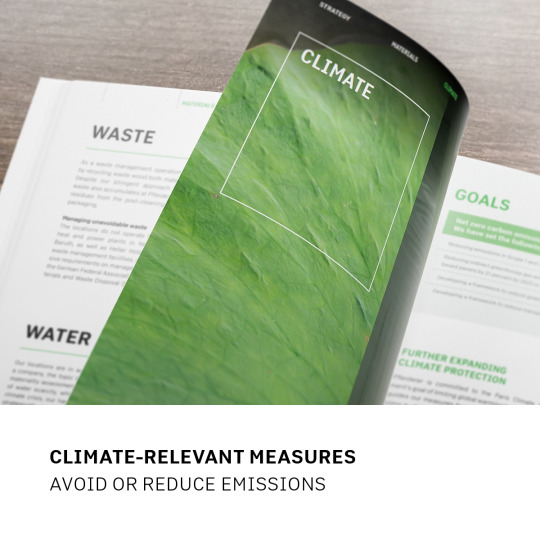

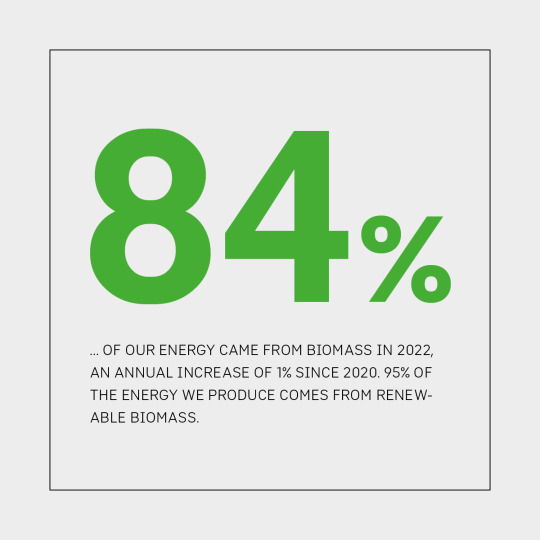


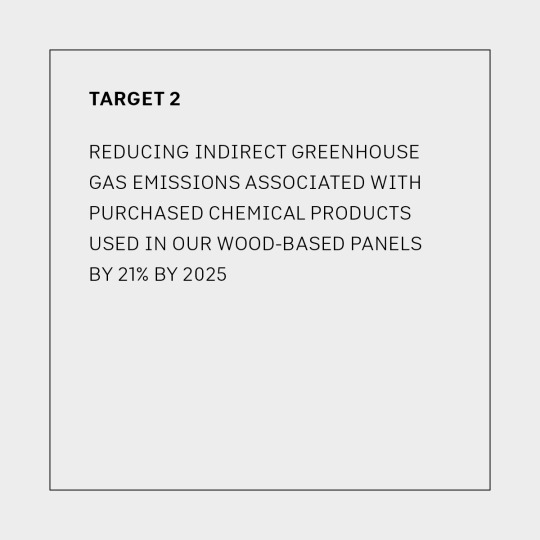
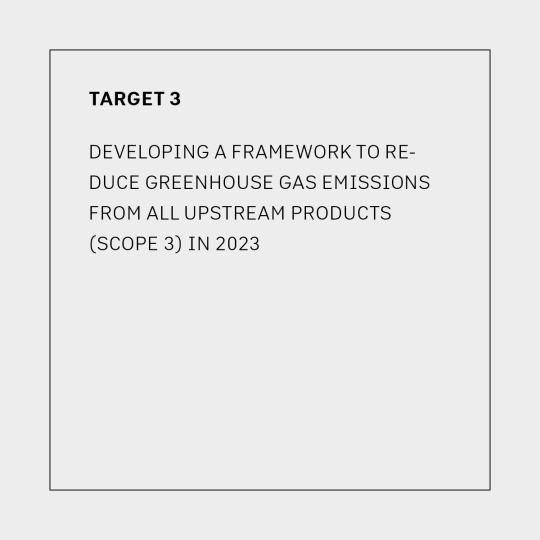
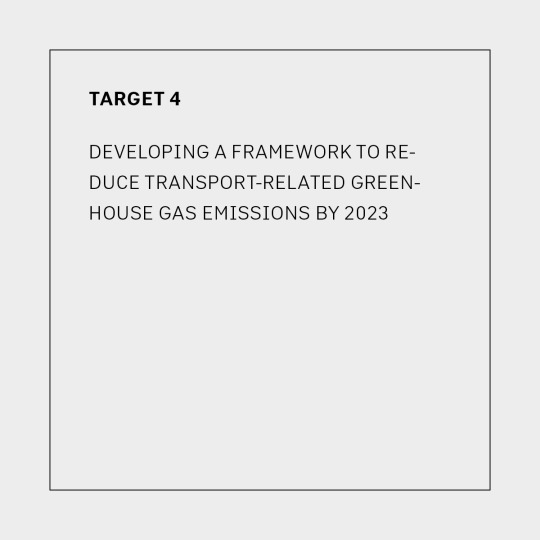

As part of the Paris climate protection agreement, the goal was set of limiting global warming to 1.5 0C by reducing climate-relevant emissions. The current global situation raises doubts as to whether this target can be met. However, Pfleiderer remains committed to the Paris climate targets and is implementing various measures to reduce its carbon footprint to zero by 2050. As a first interim step, we are aiming to reduce emissions in the following three areas by 21% by 2025 compared to 2020:
Direct greenhouse gas emissions (Scope 1)
Greenhouse gas emissions from purchased energy (Scope 2)
Greenhouse gas emissions, e.g. from purchased chemical products
Greenhouse gas emissions e.g. from upstream products (Scope 3)
Key levers of Pfleiderer's sustainability strategy, which is to be implemented along the entire global value chain, are
the widest possible use of renewable energies
the replacement of fossil raw materials in the manufacture of products with the lowest possible emissions
the optimisation of production processes and transport routes
involving partners and suppliers in the implementation of the sustainability strategy
the expansion of circular economy models
Energy efficiency and climate protection go hand in hand here at Pfleiderer. 84% of the energy at Pfleiderer sites was already generated from biomass in 2022. In 2023, more than 90% of the energy for heat and electricity was produced with our own combined heat and power generation.
Would you like to know more about how Pfleiderer aims to become a climate-neutral company? Our Sustainability Report 2022 provides detailed information about our package of measures and the goals we have already achieved:
https://www.pfleiderer.com/fileadmin/content/Images/Sustainability_Report_2023/Pfleiderer_Sustainability_Report_2022.pdf
sustainability #climate #climate #makeyourvisionswork #pfleiderer #madeingermany
0 notes
Text
Eating at...
An impromptu text written after eating at the restaurant Londo, in Ōtautahi Christchurch before moving to the UK. PDF designed by me for fun.
https://londo.bar
Eating at
LONDO(3)
Papa is a māmā.
After we finished our desert, my dad said he felt like he had been for a walk in the hills for the night and was arriving back at the car, wishing he didn’t have to go home. The last time I saw my parents, I told them we were moving to Britain; to go farming and vist standing stones, maybe live in the highlands and save some cash caring for plants so that C could make more work in the studio. A way to vacate our selves, or position ourselves elsewhere, requiring us to span a distance between our present and possible versions. We sought out how another piece of land, which knew our old people, might move us so.
Canteloupe is canned fruit salad and eighties holiday sunsets. Anti-anxiety herbal remedy in the first course. Granita disappears and comes back in the pasta. First pork in five years. Blooded salt, melonwater running.
A friend has started their PhD to understand how manipulations to the environment of carrot crops on the canterbury plains can speed their biennial seed cycle. Grow a strong root one year, send up great umbels of flower to set seed the next. A big investment. Canterbury’s immense stakes in the global carrot seed market makes for an abundance of research funding in the area.
Carrot as speculative capital. Dusty. Aniseed sweet. Of a certain age. Ryegrass gone silver in 4:33pm light. Will be a different shade tomorrow. Carrots have been simmering in that pot for years now. Lorna got married last week! Jewelled rods accross the plate. One of these days the chestnuts will be full and ripe enough to make pie. Caramel roots buoyed by romesco; whatever ectasy that is. Sit down, saucepan in the middle, over-ripe toms and the last basil. Talk for hours.
In Riverton we bought a few tiny Urenika seed potatoes. More like shrivelled yams than our idea of potatoes. I put them in the ground before Christmas and as the zuchinnis paled and powdered themselves I dug up the smallest bowlful of finglerling tubers from the mass of stems. I had to leave thousands of tiny siblings in the ground — marbles who turned glinting, giggling, glassy when rinsed. The following Feburay my flatmate got excited about putting winter greens in and dug up the potatoes that had grown from those abandoned gems. Twice as many, twice the size. Sometimes doing less is better. The tohunga who had these for dinner for centuries really knew what they were doing.
Sailing a crisp across Lake Buttersauce. Invisible sechuan heat tempered by lemons. When well-boiled, they hold a texture of sandy loam that melts in contact with saliva. We attend a soil cupping. Notes of burnt sugar and echinacea. Abstracted, well-seared cow rectangle galumphs around the table awaiting affection. We take the potatoes for a victory lap.
Buckwheat filled the garden bed with paddly green leaves until it was warm enough for the tomatoes go in. Hearted leaves now dangle yellow on jointed scaffolding. Once chantilly cream dollops attracting hoverflies and floating in the breeze on reddish stems, the flowers have become seeds; pyramidial, black.
When husked, their stony, roasted innards are steeped, syruped, and whipped frozen with cream. Toasted barley tea. Infintely more than bread and beer. The land given maximum and methodical love that it may return; animate. Not just land but lond. From before. Not just papa but Papatuuaanuku. The soil and the waters. Your islands or mine. We go deep into the tunnels to leave our offerings. Can I make a golden silk from this carrot, a cicada’s worship in a cup? Fill it up. Now cannot be before. Look after the new growth in th old place.
When we sat down to dinner my mom handed me a brown envelope. This dinner was my birthday present and I knew there would be a small card. My parents are reliable in these formalities. Small theatre. Inside the card my father had written in his quickest, way-out-the-door handwriting, “You are going to fly away. Take me with you.”
A low, 5:53 lemon sun and the crunch of another evening.
Rats eat the fallen walnuts overnight.
Pull the drapes
0 notes